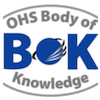Chapter 20: Fatigue
Abstract
Economic pressures for longer hours and round-the-clock working time arrangements along with a deregulated industrial landscape highlight the necessity to manage fatigue as an Occupational Health and Safety (OHS) hazard. There have been significant advances in scientific knowledge regarding the causes, consequences and methods for controlling fatigue-related risk. Changes in the amount of sleep and/or wakefulness, circadian disruption and time on task are recognised as key contributors to an individual being fatigued. Also, the cognitive demands of a given task can shape the susceptibility of a task to fatigue-related error.
The experience of fatigue is associated with increased feelings of sleepiness, impaired neuro-behavioural performance and negative mood. From an operational perspective, fatigue can sometimes manifest as an increased likelihood of fatigue-related error and/or fatigue-related accident or injury due to cognitive impairment. There are also documented negative consequences of fatigue for mental and physical health. Traditionally, fatigue has been managed primarily through the regulation of working time arrangements; specifically, regulation of shift maxima and break minima along with aggregate limits on total working hours over a specified period of time.
Recent research suggests that this is of limited benefit and that a systems approach based on the principles of risk and safety management may provide better risk mitigation. This chapter outlines the Defences in Depth (DiD) approach to fatigue management that encompasses five levels of fatigue-related hazards and their associated controls. The chapter also provides an overview of emerging research areas in the study of fatigue. Understanding and managing fatigue is essential to building a healthy and safe workplace.
Keywords: fatigue, risk, sleep, safety, health
First year of publication: 2012
Current Version: 2020
Chapter 20: Fatigue
Table of contents
| 1 | Introduction |
| 2 | Historical context |
| 3 | Extent of the problem |
| 4 | Understanding fatigue as a hazard |
| 4.1 | Mechanisms of action |
| 4.2 | Consequences of fatigue |
| 5 | Legislation ad standards |
| 6 | Control of fatigue-related hazards |
| 6.1 | Defences in Depth Model |
| 7 | On-call work |
| 7.1 | The ‘gig’ economy |
| 7.2 | Flexible working times |
| 7.3 | Implications of OHS practice |
| 8 | Summary |
| 9 | Key Authors and Thinkers |
| References | |
| Appendix 1: Working Time Society Consensus Statements |
Purchase the AUDIO chapter here through AIHS
OR

Jessica L Paterson BPsych(Hons), MPsych(Clin), PhD
Senior Lecturer, Appleton Institute, CQUniversity
Jessica has conducted research and consulting projects with multiple high-risk organisations, including those in
the health care, transport and manufacturing industries. Currently, Jessica is employed by CQUniversity as a
senior lecturer and conducts research investigating fatigue, sleep, mental health and performance, primarily in
emergency service workers and other first responders.

Sally A Ferguson BSc(Hons), MA, PhD
Director, Appleton Institute, CQUniversity Director, Appleton Institute, CQUniversity
Sally has worked in the field of sleep and work for the last twenty years. Sally has led research and consultancy
projects with partners in mining, transport, healthcare, and emergency services. Management of fatiguerelated risks in the workplace have had a focus on safety outcomes and operational readiness.

Drew Dawson BA Psych(Hons), PhD
Engaged Research Chair, CQUniversity
Drew has worked extensively with the aviation, manufacturing, retail, entertainment, transportation and
mining sectors in Australia, and is nationally and internationally recognised for his contributions to the
scientific community and to industry in the areas of sleep and fatigue research, organisational psychology and
human behaviour, industrial relations negotiations, and the human implications of hours of work.
Learning Outcomes: Psychosocial Hazards: Fatigue
The OHS Body of Knowledge takes a conceptual approach which enables it to be applied in different contexts and frameworks.
To optimise its value for education and professional development learning outcomes have been developed for each technical chapter in the Body of Knowledge.
The learning outcomes as described give an indication of what should be the capabilities of an OHS professional; it is up to those developing OHS education programs, OHS professionals planning their CPD or recruiters or employers selecting or developing people for the OHS function to consider the required breadth vs. depth .
Please read the section on using the learning outcomes before delving into the leaning outcomes of the individual chapters.
The numbers against each learning outcome refer to the chapter number of the BOK download page. No learning outcomes have been developed for the chapters considered introductory or underpinning knowledge (that is chapters 1, 2, 3, 4, 5, 6, 7, 1, .13, 14, 15.)
Videos
SWA videos: Managing shift and workplace fatigue
Every business and industry is affected by fatigue; however, some types of work and sectors have an inherently higher risk, particularly when shift work is involved.
Date: 2017
Presenter/s: Panel
Source: https://www.safeworkaustralia.gov.au/resources-and-publications/video-and-audio/managing-shift-work-and-workplace-fatigue
Webinars
AIHS Webinar: Managing cognitive fatigue and other brain centred hazards, not the brain
This webinar explores how accurate, consistent and sustainable hazard recognition and situational awareness systems in place can only be achieved by first addressing certain ‘brain-centered hazards’ in our workplaces and identify the hidden dangers behind cognitive fatigue and how it diminishes situational awareness and hazard recognition and simultaneously produces higher risk-taking actions.
Date: 2019
Presenter/s: David Musgrave, Vice President, Consulting leader, Dekra
Source: https://www.youtube.com/watch?v=y9Yr6BeFLBI&t=4s
Summary:

